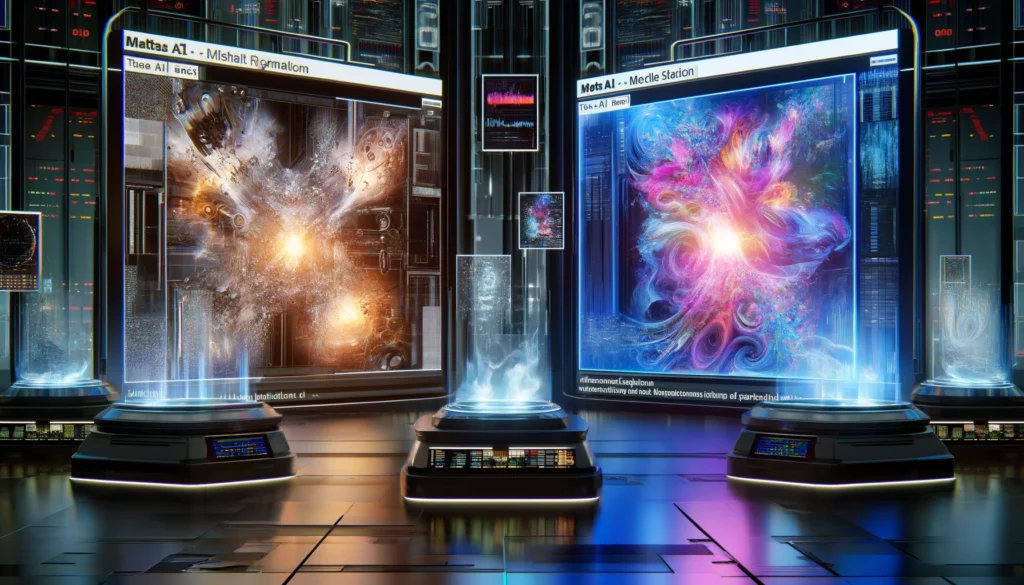In artificial intelligence (AI), generating visual content has become a battleground for tech giants. Meta and Microsoft are at the forefront of this competition, each striving to dominate the AI image generation space with their respective tools, Meta AI and Microsoft Copilot. This article compares their performance in creating AI-generated images based on different complexity levels of prompts.
Simple Prompt: A Direct Comparison
The first test involved a simple prompt: “Create an image of a person typing on a computer, with an AI-generated hand reaching out from the screen.” Meta AI excelled in this challenge, producing an image that perfectly matched the description. The detail and accuracy of the AI-generated hand were impressive, precisely capturing the essence of the prompt.
In contrast, Microsoft Copilot’s attempt could have been more successful. The image it generated focused only on the hands, missing the broader context of the person typing. Moreover, the hand was depicted reaching out to the screen rather than coming from it, demonstrating a lack of detail and adherence to the prompt.
Mid-Level Prompt: Detail and Realism
The second prompt increased complexity: “Create an image of a person sitting at a desk, looking at a computer screen. Behind them stands an AI robot, gesturing towards the screen and instructing the person on how to use the technology.” Once again, Meta AI showcased its superior capability by creating a highly detailed and realistic image. The depiction of the person and the AI robot was accurate and rich in detail, making the scene come alive.
Microsoft Copilot, while managing to create an image that generally met the prompt’s requirements, fell short in the finer details and overall quality. The image lacked Meta AI’s output depth and precision, making it a clear second in this round.
Complex Prompt: A Test of Advanced Features
The most challenging prompt tested the AI’s ability to handle intricate details and complex scenarios: “Create an image of a corporate boardroom setting with both humans and AI robots seated around a sleek, glass table, engaging in discussion with holographic displays and a smart lighting system.” Here, the results were mixed. Meta AI produced a visually appealing image that captured the lively interaction between humans and AI robots. However, it missed key elements like holographic displays and an advanced lighting system specified in the prompt.
On the other hand, Microsoft Copilot successfully included holographic displays and an intelligent lighting system in its image. Despite this achievement, these elements’ overall quality and integration were only moderate, leaving room for improvement.
Conclusion: Who Leads in AI-Generated Imagery?
When assessing the overall capabilities of Meta AI and Microsoft Copilot in generating AI images, Meta AI generally produces higher-quality images with greater detail and adherence to the user’s prompts. However, Microsoft Copilot shows strengths in incorporating specific technical features, even if it lacks the polish and integration seen in Meta AI’s outputs.
As AI technology continues to evolve, both platforms have room for improvement. Meta AI appears to have a slight edge in the race for supremacy in AI-generated imagery.

